Overview
The Boundary trilogy is the set of three hard-SF novels titled Boundary, Threshold, and Portal, written by myself and Eric Flint. All three of them, plus the YA novel Castaway Planet, take place in a universe very much like our own. The main trilogy takes place at a not completely defined but relatively short time in the future (about 30 years from "now"). Technological advances exist that demonstrate its future setting, perhaps most prominently the microscale "fairy dust" wireless sensing systems used by A.J. Baker in numerous applications, but this is no far-future supertechnology paradise. While some political landmines have been avoided and the world is not quite as bad off as we might see it today, it is still a very much normal world, with politics and people following the same basic paths they always have.
The Boundary trilogy is an attempt to show a generally positive, yet realistic, view of a possible human future, one in which we are still human, but where our sense of wonder and exploration allows us to match wits with the uncaring universe and come out of it, in the long run, ahead. The major conflicts of two of the three books are not human-VS-human, but human-VS-universe, because the universe -- deep space -- is dangerous enough!
Boundary
Into the middle of this comes Helen Sutter, paleontologist, who is shown a unique fossil and traces its origin... to find that the fossil, and what surrounds it, are an incredible enigma that she can only explain by postulating an alien lifeform -- Bemmius Secordii -- being somehow killed and fossilized right on the K-T Boundary (the layer of iridium-rich dust which is presumed to be the result of a huge asteroid impact and near the point at which all the dinosaurs except the birds were wiped out.
This is... not a popular theory. Those familiar with paleontology and its politics can imagine just HOW unpopular it is. But unbeknownst to Helen, the sensor expert A.J. Baker, who helped with her initial survey of this site, is about to make another discovery that will tie Bemmius Secordii to a mystery on Phobos, a moon of Mars: an ancient, deserted alien installation hidden deep within the little moon, and inside one room, mummified corpses of a strange, yet -- to A.J. -- disturbingly familiar appearance.
These discoveries bring together A.J., Helen, phlegmatic engineer and accident magnet Joe Buckley, intelligence agent Madeline Fathom, and a host of others in the most ambitious space venture humanity has yet dared: a journey to Phobos to investigate, in person, the remains of an alien civilization sixty-five million years dead!
To accomplish this, both the civilian space organization Ares and the National Air and Space Administration (NASA) join forces to complete the Nike, by far the largest and most powerful spacecraft ever created -- a spaceborne research vessel with the capability to carry dozens of scientists and support crew all the way to Mars and back in reasonable time. With a "hab ring" over 900 feet wide and a main body even longer, Nike is one of the largest, if not nearly the most massive, vessels built by mankind.
To minimize political fallout, the crew of Nike also includes numerous scientists from other countries; this not only allows other countries assurance that some of the benefits of this journey will accrue to them, not just the United States, but also convinces those countries with reasonable space launch capacity to support the construction of Nike with their own launch capacity. Of course, the United States would rather keep some control over the discoveries of Nike, especially if any of them appear to have military applications; for this reason, Madeline Fathom is assigned to the crew.
Madeline is one of the most formidable people in the trilogy, an extremely skilled espionage agent with long experience in the field despite her young appearance. At first she is a potential adversary of the main characters -- A.J., Helen, and Joe particularly -- but she is not malicious, nor indeed even the sort to blindly follow orders. As time goes on, she becomes more an ally and eventually friend of the main crew -- and one of their most valuable resources.
When Nike arrives at Phobos, research begins in earnest. It becomes quickly apparent that the "Bemmies" were present in our solar system for a long time -- many years -- and that despite their alien appearance had many things in common with humanity. Joe, A.J., and the others uncover devices and designs which point to these similarities.
More startling is the discovery that there may have been -- almost certainly were -- other Bemmie bases elsewhere. This implies the possibility that more alien technology could be found, analyzed and used to improve human technology. The possibility becomes actuality when one of the scientists aboard Nike discovers a material which they believe to be a room-temperature superconductor; the discovery also brings to a head the conflict between Madeline's security requirements and scientific freedom -- one of the most tense personal moments of the trilogy, as Madeline isn't entirely happy with the situation herself.
With that conflict temporarily resolved, another major discovery changes everything: A.J. Baker's analysis of multiple evidence streams shows that there is another base -- a large one -- actually on Mars, in the region called the Melas Chasma. An expedition is organized to journey to the site and investigate, but disaster strikes on the way down; their shuttle John Carter fails, crash-landing on Mars and marooning the crew on Mars -- a long distance from the target site, and with no other people able to reach them.
Most of the passengers have survived -- pilot Bruce Irwin, A.J., Madeline, Helen, Joe, and linguist Rich Skibow -- but some are injured. Joe, however, throws a huge political wrench in the works; having been thrown clear of the ship in the crash, he is the first human being to set foot on Mars, and as such, he officially claims the planet for the Ares Corporation.
After burying Dr. Ryu Sakai -- the only fatality of the crash -- the survivors manage to free the pressurized, nuclear-powered rover Thoat from the wreckage and drive across the Martian landscape, eventually reaching their destination. Above, the Nike's crew works furiously to find some way of resupplying the stranded personnel and to figure out a method to eventually rescue them.
The marooned group see no point in not continuing their work, and manage to find a way into the hidden base; within, they find most of it has been stripped of everything useful or interesting, but that there is a strange, incredibly tough door, like a vault, in the center of the base. Eventually finding a way to force it open, they find that within are incredibly well-preserved specimens and samples from sixty-five million years ago, including dinosaurs and other preserved lifeforms. There is also an interior vault which incorporates simple instructions to teach those who have entered the language of the long-dead Bemmies -- culminating in an alien "Rosetta Stone". Madeline Fathom decides that it is time to release much of the knowledge to the public: we were not alone, and perhaps we are not alone now.
Threshold
Some time has passed since the end of Boundary, and the governments of Earth have come to a typically political compromise, including what is called the Buckley Addendum to address private and government claims of land or resources on other planets: some area of the world surrounding the point of claim is leased to the claiming entity for 99 years.
While this is not terrible news for the Ares corporation -- originally, it appeared that their partnership with NASA and the U.S. Government could easily lead to them having no claim at all -- it is far worse than many of its investors had hoped for, which was to have effectively the entire planet as a claimed territory (although, realistically, there was never any likelihood that would have stood up in any court). Still, after buying out all the disgruntled investors, Ares is feeling the pinch -- and the pinch becomes far worse when it becomes clear that the new space race brought on by the discovery of alien bases hidden around the solar system is going to take up all available launch capacity, potentially choking off the supplies needed to maintain Ares' current base on Mars.
Fortunately, the man selected to head the U.N.'s Interplanetary Research Institute (IRI), responsible for administering space resources equitably, turns out to be Dr. Nicholas Glendale, Madeline's former mentor and a friend to several of the former Nike crew. Madeline -- now out of a job with her former government agency -- becomes Glendale's right-hand man, and arranges an alliance between Ares and the IRI. A.J., meanwhile, has worked with Dr. Satya Gupta to convince India to use its capabilities to build a space elevator rather than try competing with the U.S., EU, China, and Japan in making interplanetary ships. The space elevator, named Meru, begins to be constructed.
In the meantime, with Ares' help, the IRI is able to construct its own interplanetary ship, albeit one looking less impressive than Nike, centered around one of the nuclear reaction drives donated by the United States. The Nobel is to be captained by Bruce Irwin, formerly of Nike, and Jackie Secord volunteers to be the engineer for the IRI vessel.
With this, the IRI and Ares have the capability to maintain a supply line, and -- potentially -- to explore elsewhere in the system. Astronomer Larry Conley and A.J. Baker, examining data from the base on Mars, make a new discovery: indications that one of the Bemmie factions that used to occupy our solar system also had a base on Ceres, the largest of the asteroids. With this, the IRI and Ares decide on a joint venture to travel to Ceres and stake a Buckley Addendum claim on the region of the miniature planet that holds the alien base. This does have the potential problem of annoying the United States and other spacegoing factions who would very much like an alien base to claim for themselves -- especially since the discovery in Boundary turned out to, indeed, be a real, practical room-temperature superconductor which has almost unlimited applications in power transmission, transportation, and energy storage. If one such discovery is so valuable, the potential value in discoveries at other alien bases is incalculable.
The European Union turns out to be the organization that makes a move to compete, sending out the immense mass-beam drive vessel Odin to work in a cooperative fashion with the IRI-Ares group at Ceres. However, the Odin crew has been given covert orders to attempt to glean other key information from the base, hopefully to "scoop" the putative owners of something valuable. While this is generally meant to be peaceful espionage, the head of Security for Odin, Richard Fitzgerald, has his own, more hard-edged, set of orders -- and the will and resources to carry them out, if necessary.
While this mission is being assembled, the Ares-IRI crew are making significant headway in exploring Ceres Base. Not only do they determine that the Bemmies were using Ceres as an isolated biological development laboratory, they also make two other discoveries. The first is a set of devices that appear to be nuclear fusion reactors, something which could transform the way in which power is generated and supplied. The second is a mysterious ship, left in a launch bay, which does not seem to have any conventional drive systems. After considerable research, Joe Buckley and materials scientist Reynolds Jones finally recognize it as using a "dusty plasma sail" drive -- a sort of controlled nebula held by magnetic containment fields which provides a low, but constant, thrust throughout most of the solar system.
The Odin arrives, and the two groups begin to work together. Both have suspicious of each other, but the regulations for cooperation and information exchange are clear, and as time passes the crews begin to find common ground and become more comfortable with each other. Notably, Larry Conley and Anthony LaPointe become good friends in a professional sense, as both are astronomers analyzing the wealth of confusing astronomical data left by the Bemmies on Ceres, and Jackie Secord strikes up a friendship --developing perhaps into something more -- with Horst Eberhardt, a top engineer aboard Odin.
Eventually, one of Odin's crew, Dr. Anthony LaPointe, makes a key discovery: another possible base, this one on the peculiar and distant moon of Saturn, Enceladus. Using computer applications prepared for such an eventuality, LaPointe covers up (temporarily) the information he has found, and Odin prepares for departure, ostensibly for Earth. It is of course important to prevent anyone from immediately pursuing them. Richard Fitzgerald has formulated ... some distractions. Unfortunately, Joe Buckley happens to be in the reactor room when one of those distractions -- a meteor-speed mass of iron -- punches straight through the controls, causing a detonation that flings him away across Ceres' surface. The resulting blackout causes other agents to act, ending with Helen Sutter-Baker being taken hostage for the agents' escape. The agents have badly underestimated A.J. Baker and his smart dust, and all three are captured. Joe, too, is rescued, just in the nick of time.
The Ares crew shortly realize that the Odin is actually headed outsystem -- and shortly after that, discover that the "meteor" was no accident at all, but a small projectile fired by an illegally concealed coilgun that must be part of Odin's mass-beam drive sections. After considerable, and heartfelt, debate, the decision is made to try to beat Odin to their own goal... by resurrecting an alien vessel sixty-five million years old.
Reborn with some human additions for living space and rocket drive, the ship is christened the Nebula Storm, and with a crew of six -- Jackie Secord, Madeline Fathom, Helen Sutter, A.J. Baker, Joe Buckley, and Larry Conley -- they set out in pursuit of Odin, flying inside a miniature, controlled nebula of an active dusty-plasma drive, leading A.J. to dub it the Nebula Drive.
Chasing Odin, of course, is only one part of the plan. What they really want to do is prove that Odin is illegally armed, and that they did in fact attack Ceres Base with a coilgun. This would immediately force the recall of Odin and her command crew to Earth, and make it relatively easy for Nebula Storm's crew to make it to Enceladus and land to stake a Buckley Addendum claim on the base there.
Madeline and A.J. devise a plan which allows them to send some of A.J.'s "fairy dust" ahead of them to the Odin, where it is deposited on the exterior and slowly makes its way in through known areas of the design which can be used for entry. Upon close approach to Odin they are able to obtain information from the fairy dust that supports (though does not yet prove) their case, but A.J. is also able to determine what additional work needs to be done to confirm it -- which will be complete by the time Nebula Storm and Odin complete their "Oberth Maneuver" around Jupiter in preparation for the journey to Saturn.
A.J. is able to suborn Odin's systems sufficiently to ensure that they will not complete the maneuver in a manner that allows escape, and the Nebula Storm presents Odin, and her commander Hohenheim, with a choice: either the two groups agree to work together to claim the Enceladus base (because, honestly, Ares and the IRI are stretched enough dealing with two bases, let alone three), or the Nebula Storm will transmit all the evidence they now have directly to Earth as soon as they clear the interference of the powerful electromagnetic noise near Jupiter. One requirement for cooperation is that those directly responsible for the attack on Ceres Base must be arrested and, eventually, returned to Earth to stand trial.
Unfortunately, Richard Fitzgerald has been making contingency plans for just such events for months, and triggers a highly coordinated mutiny. This includes preparing the concealed coilguns to fire upon Nebula Storm before she can clear the interference and get a good transmission out to Earth. Normally a coilgun round would have little chance of hitting a mobile target -- only a small maneuver in the fairly long period of time between firing and the shell's arrival would put many, many kilometers between them -- but Fitzgerald's shells turn out to have end-stage maneuvering capability of their own. Even more unfortunately, one single pellet from the shotgun-like shell actually penetrates the alien hull of Nebula Storm and penetrates the reactor, leaving Nebula Storm dead in space.
Odin has it worse, however. During the final firing sequence, no fewer than four separate entities -- Fitzgerald with his override program, Hohenheim with his command authority, Horst Eberhardt with his own engineering expertise and backdoors, and A.J. with his infiltrated fairy dust -- were trying to seize or maintain control of the coilguns. One malfunctions, detonating the round inside the gun, and shredding a large proportion of Odin.
A desperate race against time -- and the remaining mutineers, including Fitzgerald himself -- ensues, culminating in Fitzgerald's defeat and the escape of a few surviving crewmen in Munin, the remaining shuttle of Odin. Captain Hohenheim is left behind; he was unable to reach the evacuation in time. He does, however -- unbeknownst to anyone else at the time -- manage to trigger a maneuver in the crippled ship's systems that prevents the wreck of Odin from crashing into Io, one of Jupiter's moons.
Munin makes rendezvous with Nebula Storm, and the survivors recognize that there is currently no way for them to escape the Jovian system. They have one desperate gamble: find a way to land on Europa and then, if possible, repair Nebula Storm well enough that she can somehow lift off from Europa and take them home with the Nebula Drive. They accomplish the landing... but now are stranded on the icy surface of Europa, bombarded by radiation that only the Nebula Drive can shield them from, with only the resources on the two ships to keep them alive while they find some way to repair a ship that was already raised from the dead once...
Portal
The most crucial order of business is to assure power to the Nebula Drive, or they lose the radiation shielding that will keep them alive and able to work outside their vessels; with considerable effort, the crew of both ships manages to string a power cable from Munin, which still has a functional reactor, to Nebula Storm. After stabilizing their living conditions, the crew begins to work on repairing Nebula Storm.
Unfortunately, the damage to the reactor is irreparable; the core is essentially shattered to pieces. This leaves them with the choice of finding some way to combine Munin and Nebula Storm's operation to get them back into space and operational, or of waiting until the inner system can send some kind of rescue vessel. To their surprise, they discover that the Odin -- or what is left of the giant vessel -- is in an elongated orbit around Jupiter, and -- shortly after -- that General Hohenheim is alive. The orbit passes close to Europa -- close enough that if they could reach Odin, they could bring the giant ship into orbit around Europa.
The Munin has a nuclear-powered melt-probe --meant for icy bodies like Europa or Enceladus -- on board. The crews realize that they can use the probe, Athena, to melt water for use as reaction mass by Munin, and at the same time continue to do the scientific research -- probing the interior of the moon -- that they originally intended to do.
Odin is brought into orbit, and its large supply of food and equipment makes what was impossible feasible; they design a combined vessel, to be called Mjolnir, which will return them home, using the wreck of Odin, Munin, and the Nebula Storm's Nebula Drive. An accident with Athena reveals the existence of unsuspected large caverns beneath the surface; when A.J. is able to trace the caverns and discover an entry point accessible by a wheeled vehicle, the decision is made to use the rover which was also in Munin's cargo to explore as much as is accessible of Europa's interior.
The rover, named Zarathustra, descends into Europa with a crew of four -- Madeline Fathom, Joe Buckley, Helen Sutter, and Larry Conley. The trip down is relatively uneventful, and in fact culminates with the discovery of an incredibly beautiful region of crystallized ice formations at a depth of over a kilometer below the surface.
Then a massive quake strikes, and a gap opens up -- a gap that drops straight into the black Europan ocean itself, and swallows Zarathustra with it. A massive cave-in occurs at the same time, and the gap seals up; Madeline is barely able to get a securing line on the rover before it disappears completely beneath the surface. This leaves Madeline and Larry trapped in a cavern of ice beneath Europa's surface, and Helen and Joe sealed beneath the ice itself, suspended underwater in the icy ocean of Europa!
The remaining crew, with the General to assist, work feverishly to dig through the rubble with a modified Athena to melt its way through. In the rover, Helen and Joe discover that there is, in fact, life in the depths of the Europan ocean. They also have a terrifying moment when some of that life discovers them and is only just barely driven off.
Eventually the crew manages to break through into the collapsed cavern, just barely in time to rescue both Madeline and Larry before their air finally gives out. But they they have another great challenge: how to get through the ice and bring up their friends without causing another disaster.
A desperate plan is formed that creates a sealed chamber -- one that can be pressurized enough to allow them to break the crust without unleashing the fury of a surge of water which would almost instantly freeze and entomb them all. But time is running out, because the alien lifeform's attack has damaged the seal on Zarathustra's airlock, and soon the water will flood the rover -- possibly killing them instantly, or just leading to a slower death.
But while they are waiting for a rescue that may not come, something more wondrous happens: Helen makes first contact with an intelligent lifeform, superficially similar to the original Bemmies. (this part of the story is told from the alien's point of view in the short story Skyspark) As the others frantically try to chip and even blast their way through the iron-hard ice sealing Zarathustra in, more aliens return with the first, and manage to grasp the need of Zarathustra to somehow get through the ice; with their help, the rover is mostly freed, sufficiently for Helen and Joe to escape -- but leaving one end of Zarathustra on the other side of the ice, where it can provide future communications with these strange new friends.
At last the crew boards their new ship Mjolnir and sets course for the inner system. General Hohenheim's survival has been kept a secret throughout the book, allowing Madeline's former boss and Nick Glendale to locate and prepare a trap for the people responsible for the selection of Richard Fitzgerald and the arming of Odin; with their arrest, and Mjolnir's triumphant arrival, the long journey of the crews of Nebula Storm and Munin are, at last, over.
Thus ends the Boundary Trilogy. There are more adventures in this universe, but for A.J., Helen, Joe, Madeline, and the others, it's time to retire and let the next generation handle the danger in the deeps of space!

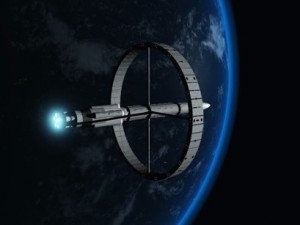
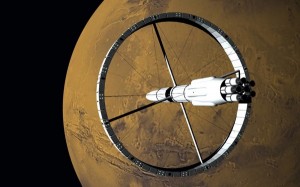
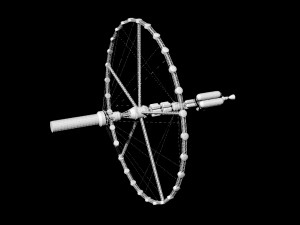
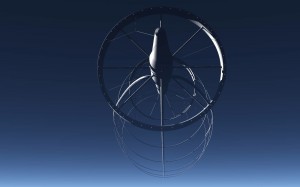
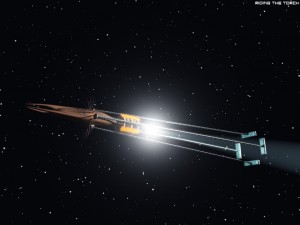
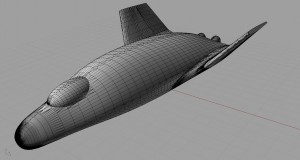

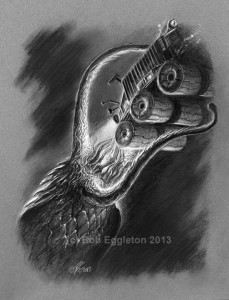



What You’re Saying